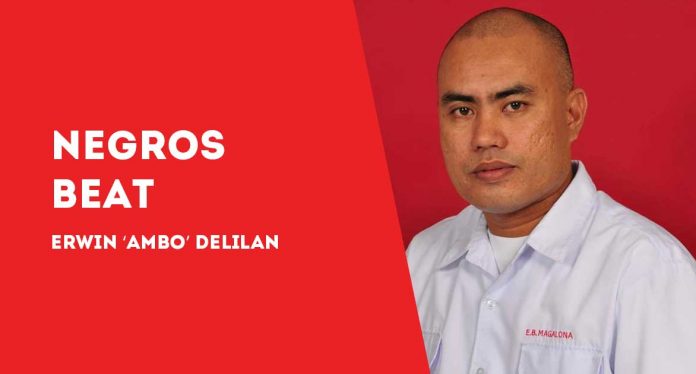
By ERWIN ‘AMBO’ DELILAN
THE “sugar-coated” blame-game has just started. With sugar prices going out of hand – both for raw and refined – no one is taking responsibility. Yet.
The Sugar Regulatory Administration (SRA) seems to be blaming Negros sugar planters who legally blocked via court injunctions Sugar Order (SO) No. 3.
SO No. 3 allows sugar imports to refill the gap due to low production in the country caused by alleged weather disturbances.
But “unwanted to be nailed on the cross”, Negros planters also passed on the blame to unknown sugar traders as the “culprits” behind the current sugar brouhaha.
Quite appalling, right? But who is/are to be blamed really?
Last week, I read a press statement from the United Sugar Producers Federations (UNIFED) president Manuel Lamata stressing that “greediness” of some sugar traders triggered the high prices of sugar in the market.
Lamata added, “Some traders are hoarding sugar to manipulate the market as if there is a shortage.”
So, the solution to this, he suggested, is for the Department of Trade and Industry (DTI), Department of Agriculture (DA) and Bureau of Customs (BOC) to open and conduct raids on sugar warehouses and file charges against the traders.
But who are the sugar traders?
And where are these warehouses?
Just asking!
On the other hand, SRA administrator Hermenegildo Serafica, in a press statement, said delay in sugar imports resulting from a court-ordered stay worsened the supply-demand balance and caused the prices to spiral beyond control.
Then, he specifically mentioned the temporary restraining order (TRO) sought by several planters’ groups from Sagay City and Himamaylan City Regional Trial Courts (RTCs) both in Negros Occidental against SO No. 3.
Each of the court issued an injunction order, preventing SO No. 3 to take effect immediately.
Supposedly, SO No.3 authorizes SRA to import 200,000 metric tons (MT) of refined sugar.
“Sugar prices would not be this high if the sugar import program was not stalled,” the SRA chief insisted.
“If not for the legal impediments…which caused delays in our import program, the imported sugar would have come in by May and June which (would have eased) the pressure on the supply and demand situation,” he added.
Furthermore, Serafica stressed, “If SO No. 3 had been implemented according to schedule, we would have been able to address the demand of the manufacturers early on, prices would not be this high and our raw sugar and refined sugar supply would be at this critical volume….Now the prices have gone out of hand and there is this situation that we are about to run out of sugar.”
ANXIOUS
Negrenses are now angry. Prices of brown sugar in Bacolod and Negros markets climbed to as much as P80/kilo now or almost double the price last year.
DTI though said that based on their recent monitoring, prices of raw sugar play at P49.50 to P70/kilo in supermarkets and P58-P78/kilo in wet markets.
For refined, added by DTI, prices run at P62.50 to P90/kilo in supermarkets and P70 to P90/ kilo in wet markets.
Quite unbearable for an ordinary bananaque vendor, isn’t it?
Where are we heading in the next few days? What’s the “mystery” behind this misery?
If we hear from Lamata, it is as if his points are justifiable.
If we listen to Serafica, it seems that he’s correct, too.
But ordinary people are anxious now.
‘FUNNY’
Well, it’s really funny to hear that super typhoon “Odette” which hit the country in December last year is still being blame d for the current sugar brouhaha.
But justified by Serafica, “As early as February, we projected a deficit in our sugar supply, largely because of weather disturbances such as typhoon ‘Odette’, excessive rain and overcast skies which have been detrimental to the growth and sugar content of the sugarcane in the majority of producing areas.”
Thus, the SRA, he said, had already estimated that sugar production for the current year at 1.8 million MT, with output depressed by bad weather.
But sugar importation amidst harvest season, stressed by Negros’ planters, would bring grave injustice, untold irreparable damages to the sugar industry that has been devastated by “Odette”.
Thus, RTCs in Sagay and Himamaylan were “necessitated”, too, in granting the TROs against SO No. 3 upon the request of the various planters’ groups.
Acting as petitioner in the Himamaylan court was Enrique Tayo of the Negros Occidental Federation of Farmers’ Association.
While David Alba’s Asosacion de Agricultores de La Carlota y Pontevedra, and La Carlota Mill District Multi-Purpose Cooperative acted as interveners.
In Sagay, Joseph Edgar Sarrosa, president of the Rural Sugar Planters Association, Inc. and, at the same time, director of UNIFED, acted as petitioner.
‘SUGAR DRAMA’
Question: Who created this “sugar drama” with incognito actors?
Fuel prices are high. A food crisis is looming. Then, here comes the “clash of the titans” causing another hullabaloo – the sugar crisis!
Can’t SRA and UNIFED bind their acts together? After all, they’re both talking the same topic: it’s sugar!
And I think they also have the “same interest” as far as sugar is concerned.
But how about us? Why do we need to suffer from this undue misery?
It’s ironic to think that we, the people living in the “Sugar Bowl” of the country, are also the “direct victims” of the current sugar mess.
We produce sugar, but we, too, suffer from the current sugar misery./PN

